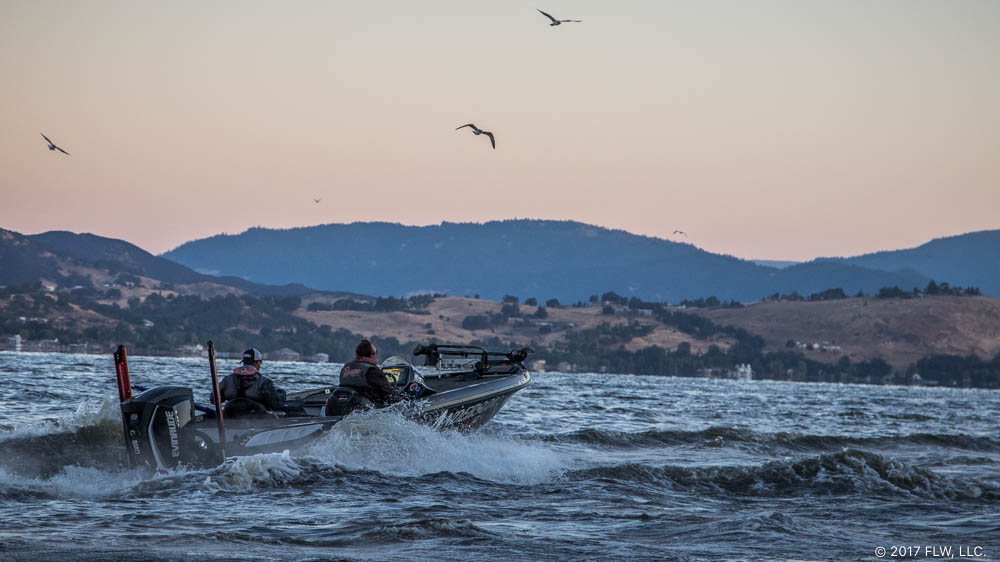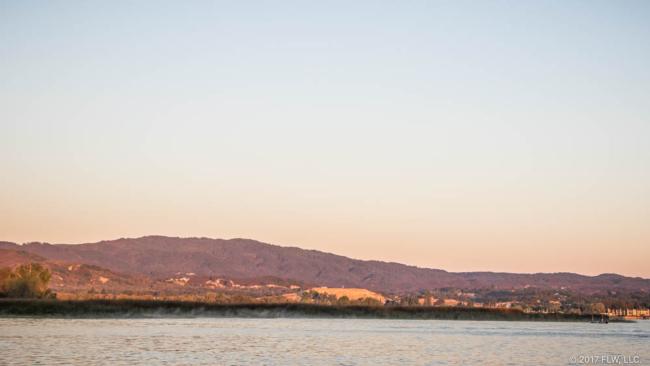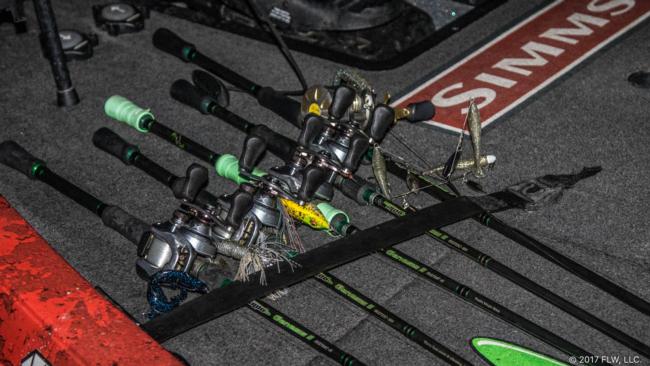Unfamiliar Waters on Clear Lake
Famed fishery might play stingy during Costa FLW Series Western finale

It’s widely considered one of the top fisheries in the Western U.S., but Clear Lake will be no cake walk for the final Costa FLW Series Western Division presented by Evinrude.
A wide array of unual conditions have lined up to make things less-than-ideal on Clear Lake for the 100 pros and co-anglers looking to end the season strong. Not only are they competing for thier shot at the top prize, but also the more coveted Angler of the Year title is at stake, which Joe Uribe Jr. currently leads for the pro side.
About the Fishery
Located at the lower edge of California’s famed Wine Country, Clear Lake covers 68 square miles — the largest natural lake wholly located in the Golden State. Comprising a mostly shallow upper bowl linked through a narrowed midsection to a deeper, two-pronged lower half; the lake is fed primarily by Cache Creek on its south end, while Rodman Slough (upper end), along with a handful of creeks and sloughs on the west side offer more backwater habitat.
Measuring 19 miles long by 8 wide, Clear Lake has a maximum depth of 60 feet, with the average running about 27. Main habitat features include tules, docks, shallow rock reefs, bluffs, points, islands and deeper offshore rocks.
Picturesque landscapes surround the lake, with the Black Forrest nestled along the west side. On the lake’s south shore, the 4,305-foot Mount Konocti is the second highest peak in the Clear Lake Volcanic Field, which includes numerous volcanic domes and cones dating back as far as 2.1 million years.
Current Conditions
Lucas Oil pro Ken Mah says the water temperature — 66-67 degrees in the morning, mid-70’s in the afternoon — is right on par for late September. His main concern is with the lake’s lack of grass due to aggressive spraying this year.
“There is very little grass and that affects the water filtration, along with the amount of oxygen being put into the water,” Mah says. “Overall, Clear Lake doesn't feel as healthy as in years past. Anytime you have dying or decaying grass, it’s not going through its photosynthesis cycle, it’s putting off CO2.
“I was all over the lake and clarity ranges from 6 inches on the north end to about 18 inches at the mid-lake and lower end. It is darker than in years past. We don’t have the clarity of the past when we’ve had 3-4 feet of visibility.”
Mah also points to a sizable August fish kill that claimed not only large numbers of bass, but also a lot of shad, bluegill, tule perch, crappie and silversides. Fortunately, Clear Lake’s forage machine seems to be recovering well, as Mah reports spotting loads of bait during practice.
On another note, unlike most of the nation’s lakes levels – which are measured by their elevation above sea level – Clear Lake uses the Rumsey Gauge, which zeros at 1,318.26 feet. The lake’s current level of 4.28 feet on the Rumsey Gauge is about 2.75 feet above normal for fall.
Tactics in Play
According to Roy Hawk, the fish have not yet transitioned into their fall patterns, but he thinks the week’s progressively cooler temperatures will have them headed in that direction. At present, no one technique or pattern has proven worthy of a three-day commitment.
“There’s a variety of different bites happening right now,” Hawk says. “There’s a good drop-shot bite on docks and the points and crankbaits are working shallow and deep. There’s no topwater bite at all; probably due to the lack of clarity and grass.”
Mah stresses flexibility. In fact, he says he’d be shocked to learn that anyone sat on a particular spot and fished one technique all week.
“The winner will weight in 15 fish; they’ll catch some shallow on something like a squarebill or a frog,” Mah says. “But then that same person will move deep and fish shaky head, drop-shot and maybe a football head out on those deeper rock piles, where the oxygen content isn’t as affected.
“You could throw a frog 50 times in a day and get one bite that may mean the difference between getting a check and not, or making the cut or not. There will be several rods on my deck and there may be 2-3 of them that I only cast 10-15 times, but that one scenario could produce the fish I need.”
Critical Factors
- Cooling temperatures – Daytime highs are going to slowly dip form the upper 80’s they were earlier this week to the upper 70’s by the weekend. While this shouldn’t be too big of a deal, the overnight lows are another thing. Temps will dip into the upper 40’s and that may slow an already stingy bite down – especially in the morning.
- High water – With the lake up close to 3 feet from normal there is plenty of shoreline cover to hold bass. It could really help the shallow riprap bite takeoff along with providing some more shallow vegetation to harbor bass.
- Water clarity – Because of the grass being killed the lake is abnormally dirty, which in turn has made the bass more fickle than normal. Finding cleaner water could be the ticket to a strong bite.
Dock Talk
Referencing past fall events in which Clear Lake victory required three to four good fish, Mah says he does not see this week’s event matching such productivity.
“If you were catching one big a day (in practice) and you can catch two big ones a day (in the tournament), I think that will be the separation. As long as you’re catching 2 1/2- to 3-pounders, I that will put you high up in the standings.
“Based on what I’m seeing, it would not shock me if 33-34 pounds made the top-10 cut. It’s Clear Lake, so it could take 75 pounds to win, but realistically, I think the winning weight could be 58-60 pounds. So, 19 1/4-19 1/2 a day might do it.”
As Mah observes, the day one weigh-in could see a handful of anglers sack up 23-26 pounds. Big bags will happen, backing up an early windfall will be difficult. Those who establish consistency will fare well in this event.
Tournament details
Format: All boaters and co-anglers will compete for two days. The top 10 boaters and co-anglers based on cumulative weight after two days of competition will advance to the third and final round, with the winner in each category determined by the heaviest cumulative three-day weight.
Takeoff Time: 7:00 a.m. PT
Takeoff Location: Konocti Vista Casino Resort & Marina, 2755 Mission Rancheria Road,
Lakeport, Calif.
Weigh-In Time: 3:00 p.m. PT
Weigh-In Location: Konocti Vista Casino Resort & Marina

